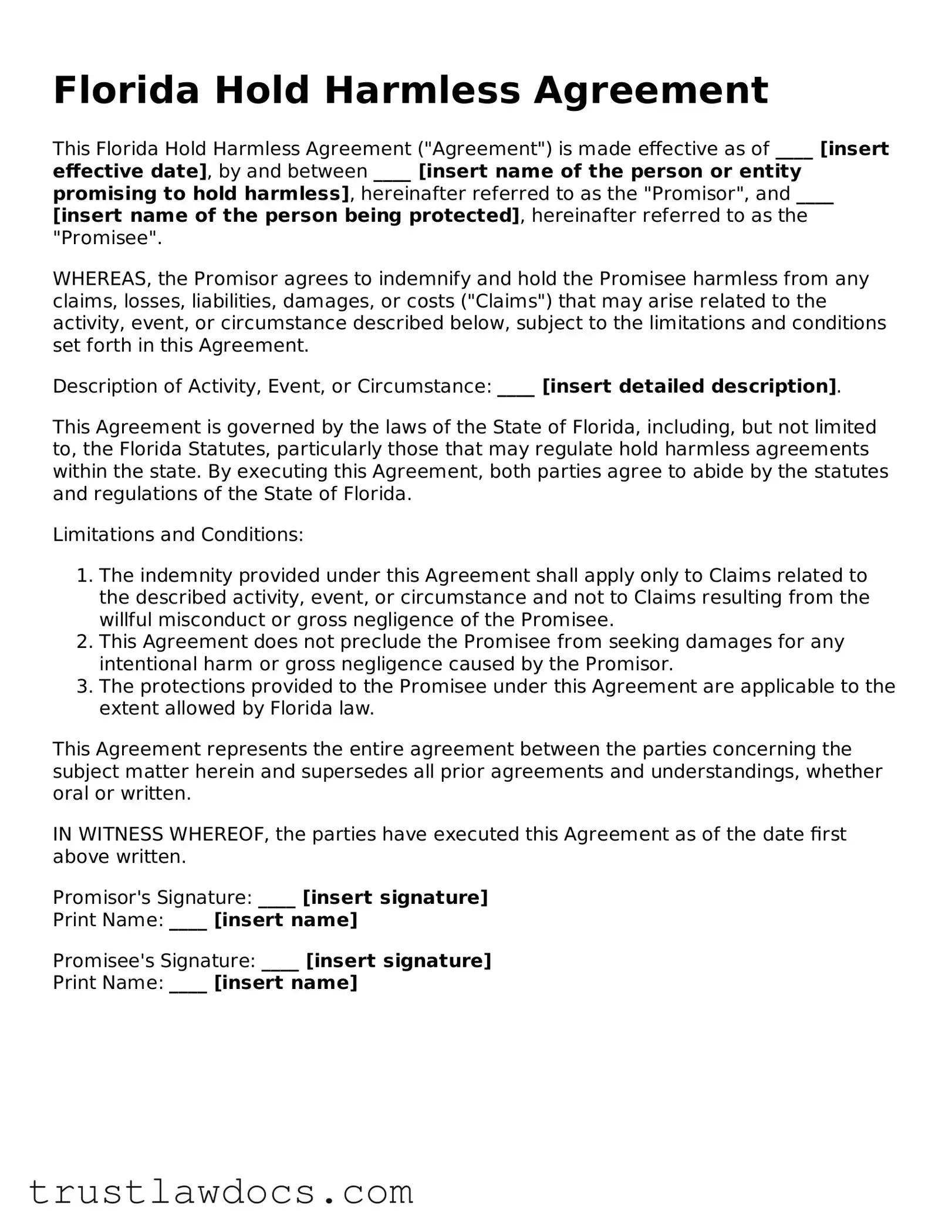What is a Florida Hold Harmless Agreement?
A Florida Hold Harmless Agreement is a legal document that is used to protect one party from liability for any injuries or damages incurred by another party. This type of agreement is often used in situations where one party is using another party's property or services and wants to ensure that the owner or service provider is not held responsible for any potential accidents or injuries.
Who needs a Florida Hold Harmless Agreement?
Individuals or organizations that are involved in activities where there is a potential for accidents or damages may need a Florida Hold Harmless Agreement. This includes businesses that offer recreational activities, property owners who lease their premises for events, contractors, and service providers among others.
When should a Hold Harmless Agreement be signed in Florida?
A Hold Harmless Agreement should be signed before any activities that could lead to potential injuries or damages begin. This ensures that all parties are aware of and agree to the terms of the agreement prior to the commencement of the activities.
What information is included in a Florida Hold Harmless Agreement?
Typically, a Florida Hold Harmless Agreement includes the names of all parties involved, a description of the activity or service being provided, the duration of the agreement, and specific details about what liabilities are being waived or held harmless. It may also include provisions for insurance, indemnification, and legal costs.
Is a notary public required for a Hold Harmless Agreement in Florida?
While not always required, having a notary public witness the signing of a Florida Hold Harmless Agreement can provide additional legal protection and help ensure that the agreement is enforceable in court.
Can a Florida Hold Harmless Agreement be customized?
Yes, a Florida Hold Harmless Agreement can be customized to fit the specific needs of the parties involved. It is important to include all relevant details and to ensure that the agreement is clear and understandable to all parties.
Are there any limitations to what a Hold Harmless Agreement can cover in Florida?
Yes, there are limitations. For example, a Hold Harmless Agreement cannot provide immunity against liability for intentional wrongdoing or gross negligence. The agreement must also comply with Florida state laws and public policy.
How can parties resolve disputes that arise under a Hold Harmless Agreement?
Disputes under a Hold Harmless Agreement can be resolved through mediation, arbitration, or litigation, depending on what the parties have agreed upon in their agreement. It is advisable to include a clause specifying the preferred dispute resolution mechanism in the agreement.
Where can one find a template for a Florida Hold Harmless Agreement?
Templates for a Florida Hold Harmless Agreement can be found online, from legal services providers, or by consulting with a lawyer who is experienced in Florida law. It is crucial to ensure that the template is up-to-date and tailored to the specific situation to avoid any legal complications.
